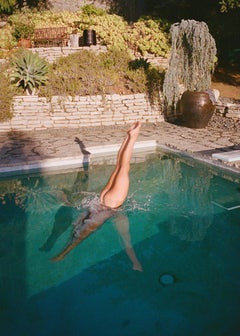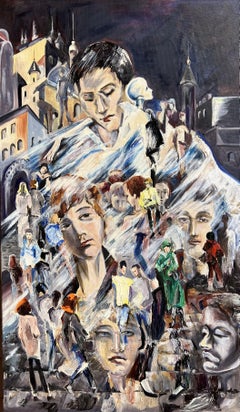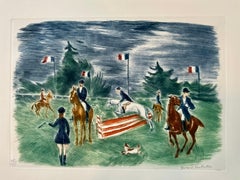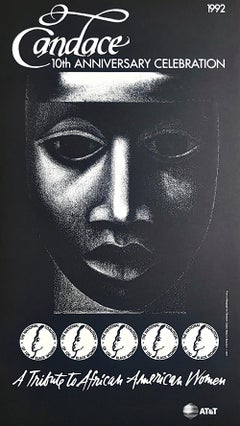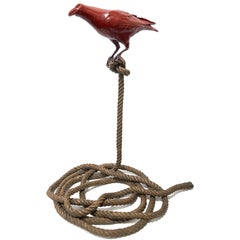Continental US - Art
2010s Contemporary Continental US - Art
Steel
21st Century and Contemporary Modern Continental US - Art
Rag Paper, Giclée, Archival Ink
20th Century Impressionist Continental US - Art
Oil
Early 20th Century Contemporary Continental US - Art
Oil, Engraving, Lithograph
1990s Contemporary Continental US - Art
Lithograph
2010s Contemporary Continental US - Art
Bronze
Late 20th Century Cubist Continental US - Art
Oil, Wood
21st Century and Contemporary Abstract Geometric Continental US - Art
Paint, Panel, Permanent Marker, Pencil
2010s Contemporary Continental US - Art
Oil
Artist Comments
Floral arrangements, porcelain jars, and a lamp create a timeless and elegant still life. Delicate roses and lavender contrast with the sturdy table, while a ...
21st Century and Contemporary Impressionist Continental US - Art
Oil
2010s Continental US - Art
Offset
Early 1900s Continental US - Art
Canvas, Oil
1960s Contemporary Continental US - Art
Lithograph
21st Century and Contemporary Realist Continental US - Art
Oil
21st Century and Contemporary Impressionist Continental US - Art
Oil
1990s Pop Art Continental US - Art
Offset
2010s Neo-Expressionist Continental US - Art
Oil, Wood Panel
Mid-20th Century Abstract Continental US - Art
Bronze
1970s Realist Continental US - Art
Photographic Paper
1960s Contemporary Continental US - Art
Photographic Film, Archival Ink, Archival Paper, Digital, Archival Pigme...
2010s Continental US - Art
Photographic Paper
Late 20th Century Continental US - Art
Lithograph
2010s Contemporary Continental US - Art
Archival Ink, Archival Paper, Lithograph
1990s Pop Art Continental US - Art
Offset
1910s American Modern Continental US - Art
Etching
1980s Abstract Continental US - Art
Lithograph, Offset
1890s Impressionist Continental US - Art
Oil, Board
1990s Abstract Expressionist Continental US - Art
Acrylic
1980s Surrealist Continental US - Art
Offset
2010s Continental US - Art
Photographic Paper
2010s Neo-Expressionist Continental US - Art
Oil, Canvas
Artist Comments
It’s an end-of-day moment, with the last bit of sunlight warmly illuminating the front porch and hedge of a Victorian house. The scene exudes a sense of cal...
21st Century and Contemporary Contemporary Continental US - Art
Oil
2010s Realist Continental US - Art
Laid Paper, Permanent Marker, Digital Pigment
Late 20th Century Abstract Continental US - Art
Oil
2010s Pop Art Continental US - Art
Metal
21st Century and Contemporary Continental US - Art
Canvas, Oil
2010s Abstract Continental US - Art
Canvas, Acrylic
Early 2000s Art Deco Continental US - Art
Canvas, Acrylic
1980s Pop Art Continental US - Art
Offset
2010s American Impressionist Continental US - Art
Canvas, Oil
2010s Continental US - Art
Photographic Paper
2010s Minimalist Continental US - Art
Canvas, Oil Pastel, Mixed Media, Acrylic, Pencil
1930s Cubist Continental US - Art
Etching
Late 20th Century Flemish School Continental US - Art
Canvas, Oil
Early 2000s Contemporary Continental US - Art
Photographic Paper, Archival Paper, Color
1960s Cubist Continental US - Art
Etching
2010s Impressionist Continental US - Art
Oil
1920s Continental US - Art
Woodcut
21st Century and Contemporary Minimalist Continental US - Art
Canvas, Mixed Media, Oil
Artist Comments
Bold, energetic brushwork shapes an abstract interpretation of a flower. Thick layers of paint convey spontaneity and life, while soft touches of blue add surpr...
21st Century and Contemporary Abstract Continental US - Art
Oil
20th Century Pop Art Continental US - Art
Offset
20th Century American Impressionist Continental US - Art
Oil, Board
Artist Comments
A neighborhood transforms into a stylized vision. Geometric lines and shapes suggest houses and trees, while a dominant blue field contrasts with bright and m...
21st Century and Contemporary Abstract Continental US - Art
Acrylic
1930s French School Continental US - Art
Oil, Illustration Board, Monotype
21st Century and Contemporary Realist Continental US - Art
Oil
21st Century and Contemporary Pop Art Continental US - Art
Paper, Mixed Media, Spray Paint, Acrylic
2010s Academic Continental US - Art
Canvas, Oil
1980s Cubist Continental US - Art
Offset
1970s Impressionist Continental US - Art
Paper, Mixed Media, Acrylic, Board, Oil
2010s Contemporary Continental US - Art
Canvas, Paint, Acrylic
